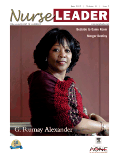
Nurse Leader
Scope & Guideline
Inspiring Excellence in Nursing Management
Introduction
Aims and Scopes
- Leadership Development:
A core focus on cultivating leadership skills among nurses, including mentorship programs, coaching, and innovative educational strategies to prepare the next generation of nurse leaders. - Workplace Health and Safety:
Exploration of strategies to create healthy work environments, including addressing workplace violence, promoting self-care, and enhancing employee well-being. - Diversity, Equity, and Inclusion (DEI):
Commitment to advancing DEI within nursing leadership, addressing systemic barriers, and promoting inclusivity in healthcare environments. - Evidence-Based Practice and Quality Improvement:
Encouraging the implementation of evidence-based practices and quality improvement initiatives to enhance patient care and operational efficiency. - Resilience and Adaptability in Nursing:
Focus on building resilience among nursing leaders and staff, especially in response to crises such as the COVID-19 pandemic. - Interprofessional Collaboration:
Emphasis on fostering collaboration between nursing and other healthcare disciplines to improve patient outcomes and operational effectiveness. - Innovative Care Models:
Investigation of new models of care, including telehealth and integrated care systems, to adapt to changing healthcare demands.
Trending and Emerging
- Mental Health and Well-Being of Nurses:
An increasing focus on the mental health and well-being of nursing professionals, including strategies to combat burnout and promote resilience in a high-stress environment. - The Role of Technology in Nursing:
Emerging discussions around the integration of technology in nursing practice, including telehealth, data analytics, and digital communication tools to enhance patient care. - Crisis Leadership and Management:
A significant rise in literature addressing crisis management and leadership in nursing, particularly in the context of the COVID-19 pandemic and its aftermath. - Community and Public Health Engagement:
Growing emphasis on the role of nurse leaders in community health initiatives and public health advocacy, particularly in promoting health equity. - Interdisciplinary Approaches:
An increased trend towards interdisciplinary collaboration in nursing leadership, highlighting the importance of teamwork across various healthcare professions. - Focus on Ethical Leadership:
Emerging discussions around ethical leadership practices, particularly in relation to social justice and equity in healthcare delivery.
Declining or Waning
- Traditional Hierarchical Leadership Models:
There appears to be a declining emphasis on traditional models of leadership that rely on strict hierarchies, as the focus shifts to more collaborative and inclusive approaches. - Single-Dimensional Leadership Training:
There is less emphasis on siloed leadership training programs that do not incorporate interdisciplinary or holistic approaches to nurse leadership development. - Static Work Environments:
The concept of static work environments is waning as the journal increasingly emphasizes flexible and adaptable strategies in response to changing healthcare dynamics. - Focus on Individual Competencies:
The journal has shifted away from a singular focus on individual competencies in leadership, moving towards a more systemic approach that considers organizational culture and dynamics. - Conventional Recruitment Practices:
Traditional recruitment practices are being overshadowed by innovative strategies that prioritize diversity, equity, and inclusion in workforce planning.
Similar Journals
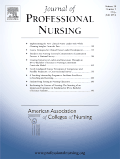
JOURNAL OF PROFESSIONAL NURSING
Elevating Nursing Standards with Groundbreaking Research.JOURNAL OF PROFESSIONAL NURSING, published by W B SAUNDERS CO-ELSEVIER INC, stands as a leading scholarly resource in the field of nursing and general medicine. With an impressive impact factor and recognized as one of the top quartile journals in both Nursing and Medicine (Miscellaneous) for 2023, this journal serves as a vital platform for disseminating groundbreaking research and innovative practices within the nursing profession. Established in 1985, the journal has continually evolved, now converging its operations through 2024, thus ensuring access to the most contemporary and relevant insights. Researchers, professionals, and students are encouraged to explore its wealth of knowledge, which is critical for advancing both nursing education and clinical practices. While it operates under a traditional access model, the journal's premium quality content is accessible to all, enhancing its role as an essential resource in shaping the future of healthcare.
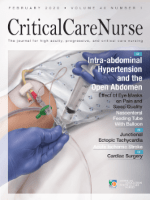
Critical Care Nurse
Pioneering Knowledge for Optimal Patient OutcomesCritical Care Nurse is a premier journal dedicated to advancing the field of critical care nursing, published by the American Association of Critical Care Nurses. With its consistent ranking in the Q1 category for Critical Care Nursing and impressive Scopus ranking at #8 out of 27, it serves as an essential resource for practitioners and researchers alike. The journal features innovative research, case studies, and reviews aimed at enhancing patient outcomes in critical care settings. As a significant contributor to nursing literature since 1980, Critical Care Nurse provides valuable insights and best practices that bridge the gap between theory and clinical practice, ensuring that professionals stay at the forefront of the ever-evolving healthcare landscape. While it is not an open-access journal, its high impact and relevance make it a critical read for those committed to excellence in critical care.
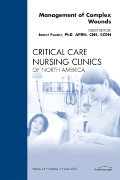
Critical Care Nursing Clinics of North America
Transforming Insights into Exceptional Patient Care.Critical Care Nursing Clinics of North America, published by W B Saunders Co-Elsevier Inc, stands as a leading journal in the field of critical care nursing, showcasing groundbreaking research and essential clinical practices since its inception in 1989. With an ISSN of 0899-5885 and an E-ISSN of 1558-3481, this quarterly publication has earned its reputation within the Q2 category of critical care nursing, ranking 13th out of 27 in the Scopus metrics. Its contributions significantly aid healthcare professionals in enhancing patient outcomes in critical settings through the dissemination of evidence-based knowledge, innovative approaches, and expert insights. Although it does not offer an Open Access model, the journal remains dedicated to serving researchers, practitioners, and students in understanding advancements and best practices within this dynamic specialty, with a focus on improving the quality of care in critical nursing environments.
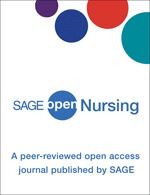
SAGE Open Nursing
Connecting scholars and practitioners in nursing excellence.SAGE Open Nursing, published by SAGE Publications Inc, is a pioneering open-access journal dedicated to advancing the field of nursing. Since its inception in 2015, this esteemed journal has aimed to foster knowledge and inspire innovative practices through the dissemination of high-quality research in nursing and healthcare. With a current Impact Factor that highlights its growing influence within Q2 of the Nursing (miscellaneous) category, SAGE Open Nursing proudly presents an inclusive forum for scholarly articles that address diverse aspects of nursing practice, education, and policy. The journal is ranked #64 out of 139 in General Nursing within the Scopus database, placing it at the 54th percentile, further affirming its significance in the academic community. Researchers, practitioners, and students alike benefit from unrestricted access to its rich content, fostering collaboration and continuous learning in the evolving landscape of nursing. Join the community engaged in shaping the future of nursing by contributing to and discovering valuable insights through SAGE Open Nursing.
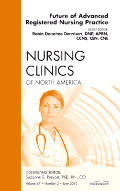
NURSING CLINICS OF NORTH AMERICA
Shaping the future of nursing with impactful contributions.Nursing Clinics of North America is a premier peer-reviewed journal published by W B Saunders Co - Elsevier Inc, providing a vital platform for the dissemination of innovative research and clinical practice insights in the field of nursing and medicine. With an impressive impact factor reflecting its relevance in academic circles, this journal falls within the Q2 category in both Medicine and Nursing disciplines, showcasing its importance to professionals and researchers. Established in 1966 and continuing through to 2024, it offers valuable contributions across a wide array of topics, facilitated by its Scopus rank of #41 in General Nursing and a 70th percentile ranking, marking it as one of the leading publications in the field. Although not an open-access journal, it provides subscription-based access to critical information that supports advancing nursing knowledge and practices. The journal is dedicated to enhancing the skills and understanding of nurses, healthcare professionals, and students, making it an essential resource for those seeking to excel in nursing and allied health professions.
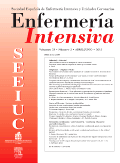
Enfermeria Intensiva
Advancing Critical Care Through Innovative Nursing InsightsEnfermeria Intensiva, published by Elsevier Science Inc, is a highly regarded journal in the fields of Advanced and Specialized Nursing as well as Critical Care and Intensive Care Medicine. With an impressive track record spanning from 1994 to 2024, this journal serves as a vital resource for researchers, healthcare professionals, and students dedicated to enhancing the quality of patient care in critical settings. It holds a coveted Q2 ranking in multiple nursing categories as of 2023, reflecting its influence and contribution to the ongoing discourse in nursing practices. Although currently not an open access journal, it continues to provide intricate insights into both fundamental skills and specialized techniques essential in intensive nursing care. By bridging research and practical application, Enfermeria Intensiva plays a pivotal role in advancing knowledge and improving outcomes in critical care environments.

Nursing Practice Today
Bridging Research and Practice in NursingNursing Practice Today is an esteemed journal published by Tehran University of Medical Sciences, focusing on the dynamic and essential field of nursing. Since its transition to Open Access in 2015, this journal has facilitated wider dissemination of knowledge, allowing researchers, professionals, and students alike to engage with pioneering studies and practical advancements in nursing care. With an impact factor that reflects its relevance within the academic community, it holds a Q3 ranking in the nursing (miscellaneous) category as of 2023, and ranks 77th out of 139 in general nursing according to Scopus, placing it within the 44th percentile for its field. Nursing Practice Today publishes high-quality research, reviews, and case studies that aim to elevate nursing practices and improve patient outcomes across a variety of healthcare settings. As a platform that champions the ongoing education and professional development of nursing specialists, this journal plays a pivotal role in shaping contemporary nursing practice and addressing emerging challenges in healthcare.
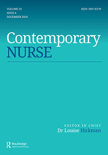
Contemporary Nurse
Championing evidence-based nursing for impactful healthcare.Contemporary Nurse is a leading journal in the field of nursing, published by Routledge Journals, Taylor & Francis Ltd. With a commitment to advancing healthcare practice through innovative research, this journal serves as an essential resource for nursing professionals, researchers, and students alike. Its Q2 ranking in the field underscores its influence and significance, placing it among the top journals within its category. The journal covers a broad scope of topics within nursing, ensuring that it remains relevant to contemporary healthcare challenges. The journal, which has been in publication since 1992, welcomes a diverse range of articles that contribute to nursing education, practice, and policy. While it does not currently offer open access, articles are accessible through institutional subscriptions. As the nursing field continues to evolve, Contemporary Nurse remains a vital platform for scholars and practitioners to disseminate groundbreaking research and engage with new ideas.
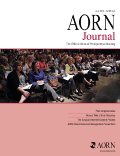
AORN JOURNAL
Elevating Standards in Perioperative Education and Practice.AORN JOURNAL, a reputable publication in the field of Medical and Surgical Nursing, has been at the forefront of nursing education and practice since its inception in 1963. Published by WILEY, this peer-reviewed journal serves as an essential resource for nurses, educators, and healthcare professionals seeking to enhance their knowledge and skills in perioperative care. With an impressive ranking of 15th out of 26 in its category according to Scopus, and a Q2 rating in the 2023 category quartiles, the AORN JOURNAL consistently provides high-quality research, innovative practices, and evidence-based guidance. While currently not an open-access journal, it offers valuable insights and practical solutions to complex challenges in surgical settings, making it a crucial tool for advancing the nursing profession. The journal's commitment to fostering excellence in patient care continues to empower professionals and students alike, ensuring they stay at the leading edge of medical knowledge and practice.
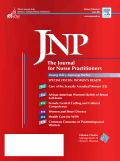
JNP- The Journal for Nurse Practitioners
Elevating Patient Care via Specialized Nursing Knowledge.JNP - The Journal for Nurse Practitioners is a leading publication in the fields of Advanced and Specialized Nursing, as well as Fundamentals and Skills, proudly published by Elsevier Science Inc. With an ISSN of 1555-4155 and an E-ISSN of 1878-058X, this journal provides a robust platform for disseminating innovative research and clinical insights relevant to nurse practitioners. With a respectable 2023 Scopus ranking placing it in the Q2 category for several key nursing disciplines, JNP serves as an essential resource for professionals seeking to stay at the forefront of nursing practice. The journal spans over a decade of impactful scholarship, converging years from 2005 to 2024, encouraging the advancement of knowledge and skills within the nursing community. Although currently not an open-access publication, it remains pivotal for researchers and practitioners dedicated to improving patient care and advocating for the nursing profession.